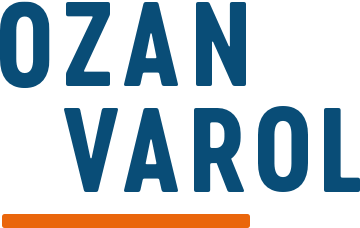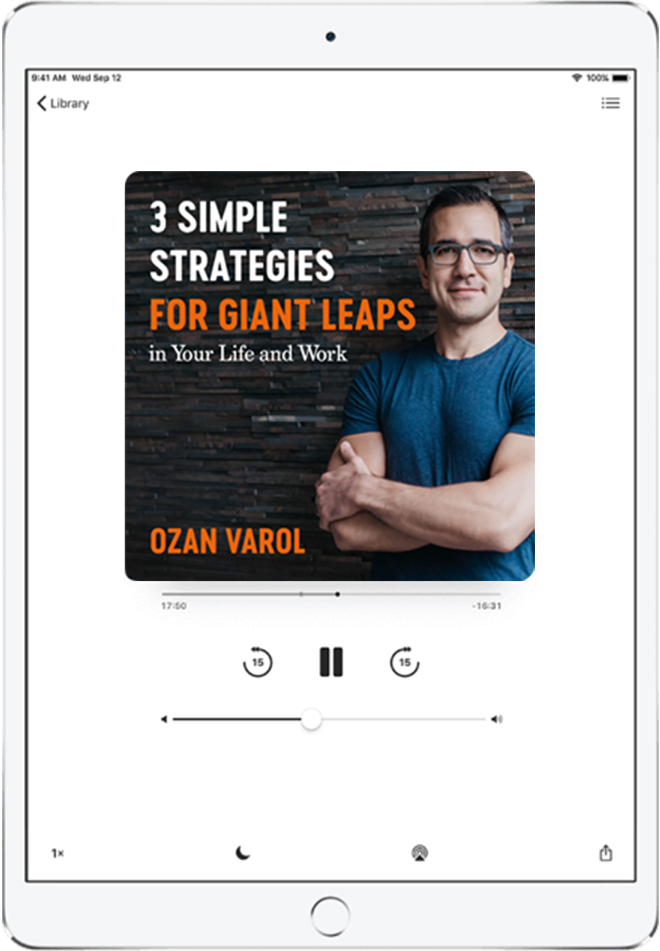In 1953, a man showed up at the UCLA library. He walked to the basement, where there were stacks of old Remington and Underwood typewriters that operated much like a soda machine. The man put a dime into the typewriter, which let him type the words to his novel for a half hour. With the clock literally ticking, he was driven to become a self-proclaimed “maniac at the keys.” One dime after the next, he typed away like a madman and finished the novel in just nine days.
He then picked up the phone, called the Los Angeles Fire Department, and requested the fire chief. He asked, “At what temperature does book paper catch fire and burn?” The chief’s answer gave him the title of his new novel: Fahrenheit 451.
The story of how Ray Bradbury wrote his classic novel doesn’t fit within our preconceptions of creativity. The phrase “creative freedom” implies that creativity needs freedom to thrive. When we think of creatives, we think of free spirits who blissfully spend their days with big ideas percolating in their minds and a good amount of wine percolating in their blood.
Constraints like the one Bradbury faced are supposed to be detrimental to our work. We complain about not having enough time, money, or resources to achieve our goals.
But it turns out that constraints can help, rather than undermine, creativity. As Adam Morgan and Mark Barden argue in their book, The Beautiful Constraint, constraints can stimulate resourcefulness—in the same way that the 30-minute countdown clock pushed Bradbury to finish his novel in record time.
Bradbury is not alone here. Consider also the author Theodore Geisel. When the head of Random House bet Geisel that he couldn’t write a book using only 50 words, most authors would have walked away muttering words like “impossible” or “nonsense”.
But Geisel gladly took him up on the offer. Not only that, but he did one better. He wrote a book with just 49 words of one syllable and the word “anywhere.” The book, Green Eggs and Ham, became the best-selling book by Geisel, who’s better known as Dr. Seuss.
Another example is the late Paul Kalanithi, a neurosurgeon who wrote the wonderful book, When Breath Becomes Air, after he was diagnosed with stage IV lung cancer. In an epilogue to the book, his wife Lucy explains the severe constraints that faced Paul as he wrote his book:
“During the last year of his life, Paul wrote relentlessly, fueled by purpose, motivated by a ticking clock. He started with midnight bursts when he was still a neurosurgery chief resident, softly tapping away on his laptop as he lay next to me in bed; later he spent afternoons in his recliner, drafted paragraphs in the oncologist’s waiting room, took phone calls from his editor while chemotherapy dripped into his veins, carried his silver laptop everywhere he went. When his fingertips developed painful fissures because of his chemotherapy, we found seamless, silver-lined gloves that allowed use of a trackpad and keyboard.”
Kalanithi’s brutal diagnosis imposed a constraint of time that fueled a feverish passion to fulfill a lifelong dream: write a book. Even the harshest of constraints can lead to something beautiful.
Rocket scientists also have a history of leveraging constraints into breakthroughs.
In 1962, JFK stepped up to a podium at Rice University stadium and pledged to land a man on the Moon and return him safely to the Earth before the decade was out. This was exceedingly ambitious: At the time, most unmanned NASA rocket launches were ending in spectacular explosions. Driven by this significant time constraint and a desire to beat the Soviets, NASA turned the seemingly impossible into the possible. By today’s standards, NASA also operated under severe technological constraints. The computers that allowed Neil Armstrong to take his giant lead for mankind were about as powerful as a long-obsolete pocket calculator.
Not only can constraints be beautiful, but their absence can be harmful. The lack of constraints can breed predictability and complacency. With no constraints, the status quo is often preserved. With an abundance of resources, there’s no reason to act differently. Excessive freedom can also trigger analysis paralysis. As Barry Schwartz argues in the Paradox of Choice: Why More is Less, “as the number of choices we face increases, freedom of choice eventually becomes a tyranny of choice.”
To be sure, excessive constraints can hurt rather than help. NASA learned this lesson the hard way in the late 1990s. NASA’s “faster, better, cheaper” policy for sending spacecraft to Mars resulted in one disaster after another in large part because the severe financial and time constraints crippled its employees.
But it’s not easy to tell when a constraint crosses the excessive threshold. A debilitating constraint in one context can unleash innovation in another.
Consider, for example, SpaceX’s disruption of the rocket industry. For decades, the rockets that launched spacecraft into outer space couldn’t be reused. They would plunge into the ocean after carrying their cargo to orbit, requiring an entirely new rocket to be built. It was the cosmic equivalent of torching the airplane at the end of each commercial flight. Motivated by a significant constraint–create better rockets at a fraction of the regular cost–SpaceX made rocket science history. It designed a rocket that can safely land back on Earth to be reused after each launch. The resulting innovation is a game changer that will drastically cut the cost of spaceflight.
The next time you face a constraint, resist the instinct to lament. Instead, try to leverage the constraint to your advantage.
If you’re fortunate enough to lack natural constraints, feel free to invent some. Take a project that would normally take a week to finish and condense it to one day. Launch a business with no advertising budget. Channel your inner Bradbury and give yourself 30 minutes to write a book chapter.
Instead of becoming complacent, you’ll become creative.
It’s your turn. The clock is ticking.



